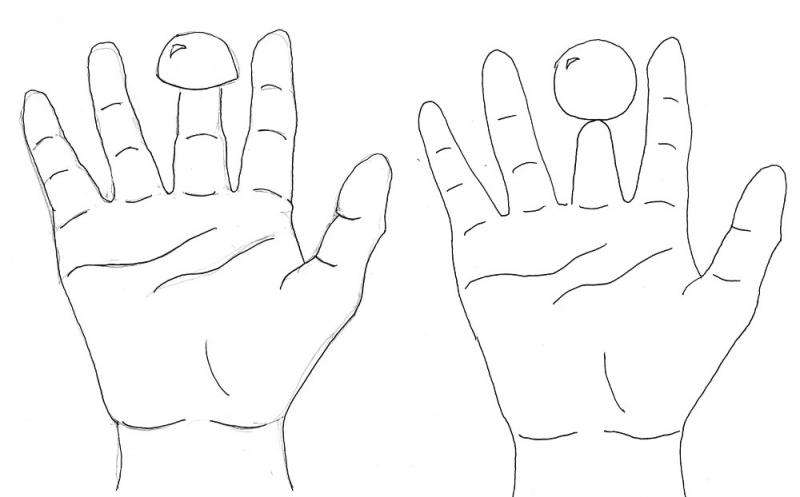Scientists work their magic on 'shrunken finger illusion'

What happens when you rest a chopped ping pong ball on your finger and look at it from above? Experimental psychologists from KU Leuven, Belgium, have shown that our visual system fills in the bottom part of the ball, even though we know it's missing. This makes our finger feel unusually short, as if to compensate for the 'complete' ball. The findings indicate that the completion is due to our visual system, not our imagination.
Getting people to pick a particular card, diverting attention from sleight-of-hand moves, creating illusions: magic tricks reveal a lot about how our minds work. That is why the science of magic holds great attraction for psychologists studying our perception and beliefs.
Experimental psychologist Vebjørn Ekroll from KU Leuven is one of them. In 2013, he used magic tricks to show that our eyes fill in the back of a round shape, even if it's missing. This perceptual illusion underlies the classic 'multiplying balls' routine . Using semi-spherical shells, the magician makes his audience believe that he can make several little balls magically appear between his fingers. In reality, the audience sees shells but visually completes them into complete balls.
In their latest study, Ekroll and his colleagues show that this illusion persists when observers are allowed to touch the inside of the shell with their fingertip. What is more, touching the shell produces a second illusion: observers report that their finger somehow feels shorter, as if to compensate for the illusory bottom volume of the ball.
The 'shrunken finger illusion' provides strong evidence for a counterintuitive idea about how our brain works. "We already know that our mind completes what we don't see", Ekroll explains. "Our study shows that our visual system is behind the illusion, not our conscious mind. Rationally, we know that our finger is not actually shorter, but the illusion persists nonetheless."
The study is published today in Current Biology.
More information: Current Biology, dx.doi.org/10.1016/j.cub.2016.02.001















